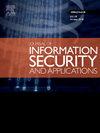Beyond known threats: A novel strategy for isolating and detecting unknown malicious traffic
IF 3.8
2区 计算机科学
Q2 COMPUTER SCIENCE, INFORMATION SYSTEMS
Journal of Information Security and Applications
Pub Date : 2024-12-07
DOI:10.1016/j.jisa.2024.103920
引用次数: 0
Abstract
Traditional network intrusion detection systems excel at screening known attack types, but face significant challenges when dealing with unseen malicious traffic, often misclassifying such novel attacks into known classes. Existing unknown malicious traffic detection methods frequently fail to effectively control the distribution of known classes in the representation space and do not reserve sufficient representation space for unknown malicious traffic, blurring the boundaries between known and unknown traffic classifications. Furthermore, because known traffic types are centrally distributed within the representation space, whereas unknown malicious traffic types are scattered throughout, additional constraint processing of hard samples is required. To this end, we propose a one-class classification model for unknown malicious traffic called OC-MAL. The core of OC-MAL is to make full use of hard samples to force constraints on the distribution of the known classes in the representation space, separating the unknown and known classes well and realizing the accurate detection of unknown malicious traffic. We fuse a Deep SVDD and an autoencoder in which the reconstruction loss ensures that the latent variables of known classes retain rich category information and the distance loss ensures that known classes are tightly clustered at the center of a hypersphere in representation space. Moreover, the two are combined to further improve the discriminative power on unknown malicious traffic. We evaluated the OC-MAL model on a public malicious traffic dataset. The results showed that it achieves an average AUC value of 95.16% on the malicious traffic dataset, outperforming other state-of-the-art methods.
求助全文
约1分钟内获得全文
求助全文
来源期刊

Journal of Information Security and Applications
Computer Science-Computer Networks and Communications
CiteScore
10.90
自引率
5.40%
发文量
206
审稿时长
56 days
期刊介绍:
Journal of Information Security and Applications (JISA) focuses on the original research and practice-driven applications with relevance to information security and applications. JISA provides a common linkage between a vibrant scientific and research community and industry professionals by offering a clear view on modern problems and challenges in information security, as well as identifying promising scientific and "best-practice" solutions. JISA issues offer a balance between original research work and innovative industrial approaches by internationally renowned information security experts and researchers.
 求助内容:
求助内容: 应助结果提醒方式:
应助结果提醒方式:


